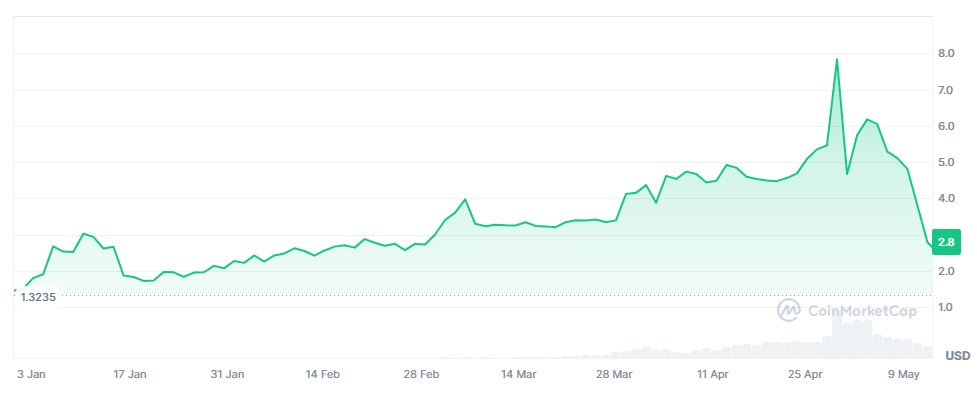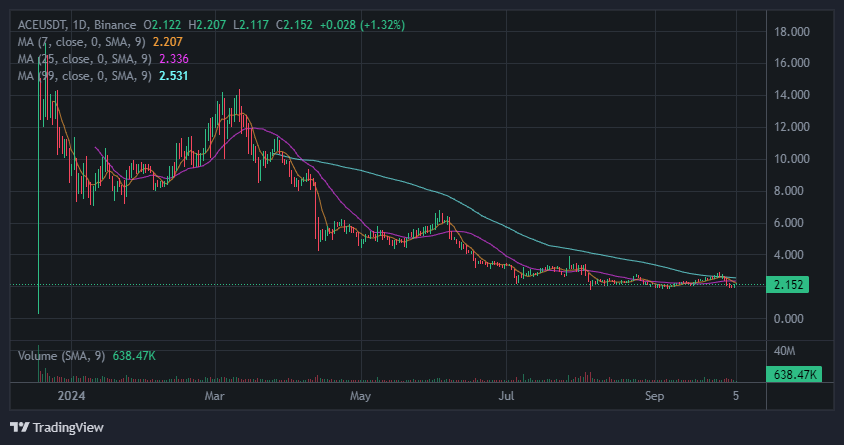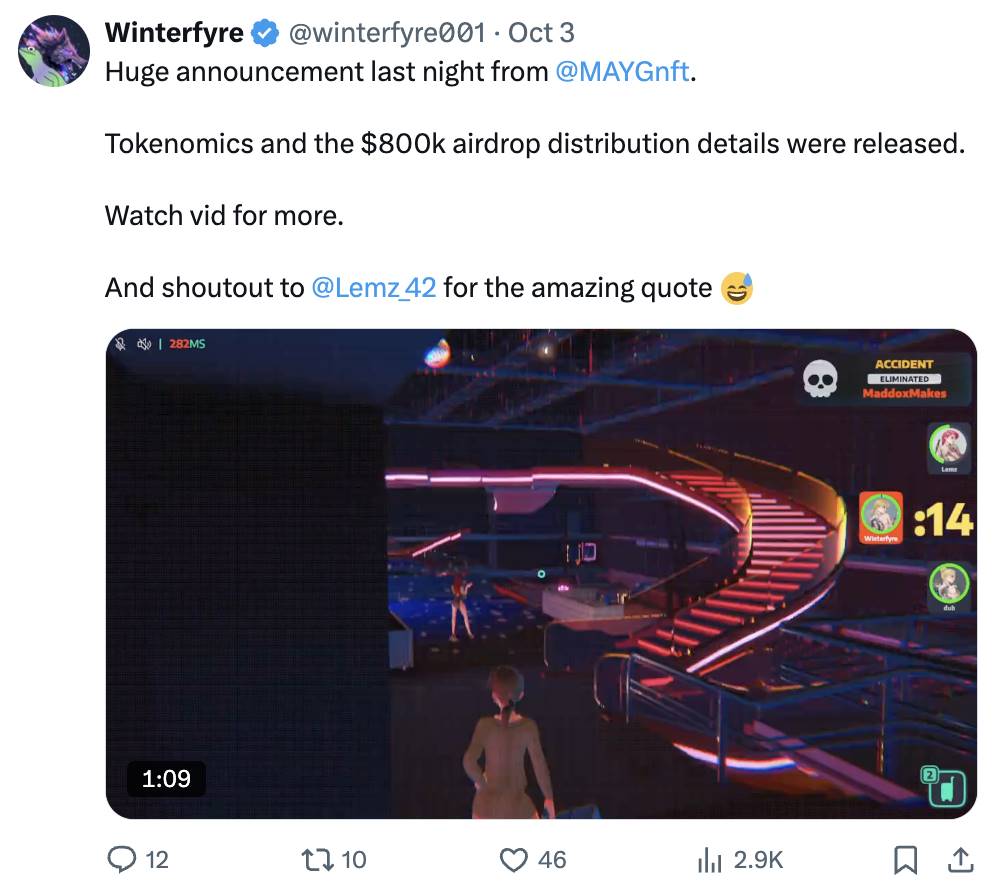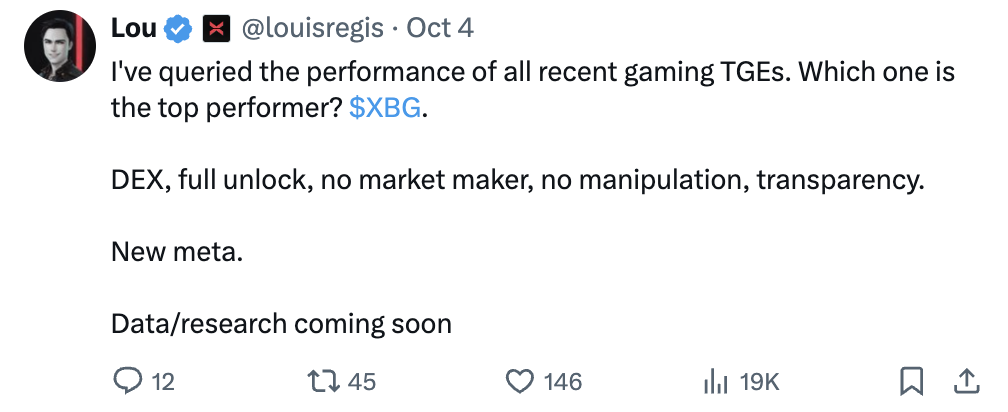The combination of DEX and 100% allocation is quite a good strategy.
Author: 1mpal
Compiled by: Deep Tide TechFlow

Recently, discussions about game projects listing on decentralized exchanges (DEX) and centralized exchanges (CEX) have become increasingly heated. As a consultant providing advice for game projects, I have witnessed this debate firsthand. The listing requirements for exchanges have become stricter and more expensive.
While exchanges claim that stricter requirements help filter out higher quality projects, in reality, the increased difficulty of listing forces project teams to adjust their development plans, overly focusing on token generation events (TGE). Therefore, the option to list on DEX and allow the market to naturally regulate the entire token supply has recently gained more attention and support.
1. The Irrationality of CEX Listings

Do you remember the warning signs when GST was listed on CEX?
Perhaps the dilemma faced by all utility tokens begins with listing on exchanges. The benefit of listing is to create liquidity for the token, especially when the token is listed on top CEXs, which guarantees its fully diluted valuation (FDV) and can artificially inflate the project's valuation. For example, Binance's FDV reached $800 million, while OKX's FDV was $300 million.
Projects typically need to allocate 10-20% of their tokens to list on exchanges, and after the TGE, existing projects often need to spend hundreds of thousands of dollars to list on other exchanges to facilitate trading. This is devastating for the sustainable development of game projects, as much of the trading volume flowing to exchanges ultimately gets sold off.
If the trading volume of utility tokens used in games is overly concentrated on centralized exchanges (CEX), then no matter how innovative the utility system is, it will be difficult to function effectively. Stepn's GST is a typical example. Recently, game projects have begun to try adopting meme-like roles and actively participating in narrative building.
2. Hedging and Lending

The ability to hedge actually means that tokens can be traded on margin or futures, which is beneficial for market making and increasing trading volume, but extremely detrimental for utility tokens and "play-to-earn" (P2E) tokens.
For example, there is a game in South Korea called ACE ARENAS that is very popular. My friends can earn thousands of dollars a month by playing this game. Many people joined after hearing the news. So, should the value of the token rise due to increased demand? The answer is no, due to the impact of hedging strategies.
Of course, decentralized exchanges (DEX) are also gradually supporting hedging, but most players engage in risk-free profit acquisition on centralized exchanges. Especially since exchanges support lending for game utility tokens, this greatly accelerates the vicious cycle of token price decline.
3. Interesting Cases

This is why some projects have recently begun to attempt token issuance on decentralized exchanges (DEX). XBORG provided participants with rich opportunities in its public sale, with early participants receiving returns of about 4 to 5 times. This is a unique case where prices can rise even after 100% token allocation.
MAYG is trying a more aggressive experimental approach. It adopts an extremely low fully diluted valuation (FDV) and allocates all tokens to the market from the start. Since the product has not yet fully launched, this seems to be a case of combining "meme" culture with game utility tokens.
Seedify Fund is another DEX-centric project that recently promoted Seedworld as a de facto token/NFT public sale. However, this does not mean that all tokens are distributed from the beginning, but rather expresses confidence in the project, as the initial Seedify was also DEX-centered.
Comparison of guaranteed fully diluted valuation (FDV) with high-risk, high-reward
Comparison of guaranteed trading convenience and visibility with strengthening the identity of game tokens
The fully allocated model has experimental appeal for both CEX and DEX

Before I conclude, I need to clarify that I am not sure if XBORG truly has the value to support its fully diluted valuation (FDV), nor do I believe that a temporary FDV of $100 million can be called a "success." They may pop champagne and claim to be the center of the metaverse, but I mention them merely as an example.
I still have high hopes for tokens that will be listed on top centralized exchanges (CEX) and highly value their potential. However, I believe that the current game token economics need reform, especially the existing unlocking models, which have had a significant negative impact on the game token ecosystem. Tokens with 100% allocation can truly demonstrate market demand.
Listing on exchanges has significant advantages in enhancing the visibility of games and providing liquidity, which is difficult for decentralized exchanges (DEX) to match, as CEXs offer greater accessibility. However, DEXs excel in giving game tokens greater freedom. The current discussions are very interesting, and we look forward to seeing someone make a move. The combination of DEX and 100% allocation is quite a good strategy.
免责声明:本文章仅代表作者个人观点,不代表本平台的立场和观点。本文章仅供信息分享,不构成对任何人的任何投资建议。用户与作者之间的任何争议,与本平台无关。如网页中刊载的文章或图片涉及侵权,请提供相关的权利证明和身份证明发送邮件到support@aicoin.com,本平台相关工作人员将会进行核查。




